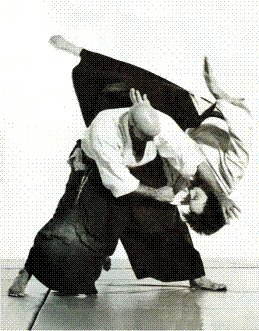Shu Ha Ri
“Shu-ha-ri” significa, literalmente, aceptar el Kata, diferenciarse del Kata y descartar el Kata. El propósito del entrenamiento en un ambiente Japonés clásico casi siempre sigue este proceso educativo. Esta aproximación única al aprendizaje ha existido durante siglos en Japón y ha sido clave en la supervivencia de muchas de las más antiguas tradiciones Japonesas.
Estas incluyen ámbitos tan diversos como puedan ser las artes marciales, la composición floral, él teatro, las marionetas, pintura, escultura y poesía. Si bien el Shu-ha-ri ha funcionado bien hasta la era actual, nuevas aproximaciones sobre el aprendizaje y la enseñanza están alterando este método tradicional Japonés de transmisión de conocimientos.
El artículo completo, traducido por Óscar Recio, en http://www.aikidojournal.com/article?articleID=222&lang=es.
Original version, by Yukiyoshi Takamura, at http://www.aikidojournal.com/article?articleID=222.
Por cierto, que O'Sensei ya hablaba de esto cuando decía eso de "Entra por la forma y sal de la forma". Algunos se quedan únicamente con el "sal de la forma", sin comprender el proceso, sin crear una base sólida. Creo que es un mal muy extendido en el Aikido de hoy día. ¿Por qué no escuchamos a los Maestros como Takamura Sensei?

 The Art of Aiki es la más completa fuente de información sobre el Aikido en Español. |
The Art of Aiki es la más completa fuente de información sobre el Aikido en Español. |